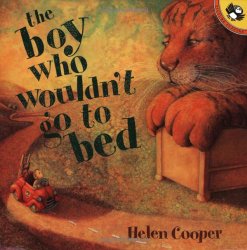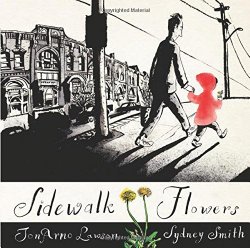Review of Bug in a Vacuum, by Mélanie Watt
by Mélanie Watt
Tundra Books, 2015. 96 pages.
This book makes me laugh. The premise is simple: It’s the stages of grief as experienced by a fly caught in a vacuum cleaner.
The note at the back explains, “The five stages of grief, also known as the Kubler-Ross model, introduced in 1969, are a series of emotions commonly experienced when facing a life-changing event.”
Yes, this would be helpful for explaining the stages of grief to a child. But it’s also just plain fun. Although it’s long, there aren’t a lot of words on each page, and the lavish illustrations do most of the work of telling the story.
The fly, of course, has something to say at every stage:
Denial: “This is amazing! Doesn’t get much cozier than this … Can’t wait to tell my friends about this place!”
Bargaining: “My how the time flies! I must be on my way. Can I be vacuumed next Monday instead? Tonight’s bowling night with the dung beetles.”
Anger: “I WANT OUT NOW!!! NO MORE MR. NICE FLY!!!”
Despair: “I’ll never see the sky again. Let’s face it … I have no future!”
Acceptance: “I surrender! I’ll make the best of things …”
Now, the book is made less bleak in that the fly eventually does escape, as the vacuum is hauled to a dump and breaks open. There’s a parallel journey involving a dog and its stuffed toy – and the dog gets distracted while the toy ends up part of a bird’s nest, so we are given an alternate ending.
You might think that a lot of pictures of the inside of a vacuum would get old, but Mélanie Watt knows how to add details to keep you occupied many times through the book.
This isn’t exactly a book for storytimes – but it is a book that could be used as bibliotherapy – but is also an engaging, brilliantly illustrated, and entertaining story totally apart from its teaching value. And since I consider few things worse than a didactic book that is not entertaining, as far as I’m concerned, that’s a big win.
Find this review on Sonderbooks at: www.sonderbooks.com/Picture_Books/bug_in_a_vacuum.html
Disclosure: I am an Amazon Affiliate, and will earn a small percentage if you order a book on Amazon after clicking through from my site.
Source: This review is based on a library book from Fairfax County Public Library.
Disclaimer: I am a professional librarian, but I maintain my website and blogs on my own time. The views expressed are solely my own, and in no way represent the official views of my employer or of any committee or group of which I am part.
What did you think of this book?









